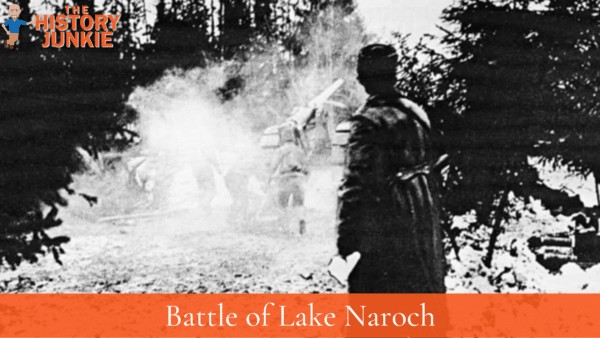In early 1916, during World War 1, the French were under heavy pressure from the Germans at Verdun. To relieve this pressure, the French commander-in-chief, Joseph Joffre, urged his allies to launch offensives of their own. The first became known as the Battle of Lake Naroch.
The Russians, under Chief of Staff Mikhail Alexeev, responded by launching an offensive in the Vilna-Naroch area of Lithuania. The Russian forces outnumbered the German and Austro-Hungarian forces in this area by about 1.5 million to 1 million.
The Battle
Alexeev chose to launch the offensive in the north, where the numerical disparity was greatest. He instructed General Kuropatkin's Northern Army Group to attack from the northeast towards Vilnius.
The focus of the attack, however, was to be from the east of the city, led by General Smirnov's Second Army. Smirnov's army consisted of 350,000 men and 1,000 guns, against which were ranged just 75,000 men and 400 guns of the German Tenth Army.
The offensive was launched on March 18, 1916, with a two-day artillery bombardment. However, the bombardment was wildly inaccurate, and the infantry assault that followed quickly became bogged down in the mud associated with the developing spring thaw.
The Russian forces were also ill-prepared and lacked an effective supply system. As a result, the attack was a notable failure.
The Russians suffered heavy casualties, losing an estimated 100,000 men. The Germans, on the other hand, lost only about 20,000 men. The offensive was a major setback for the Russians, and it did not succeed in relieving the pressure on the French at Verdun.
In the aftermath of the Lake Naroch offensive, the Russians launched another offensive, this time under the command of General Brusilov. The Brusilov Offensive was a much more successful operation, and it helped to turn the tide of the war in favor of the Allies.

